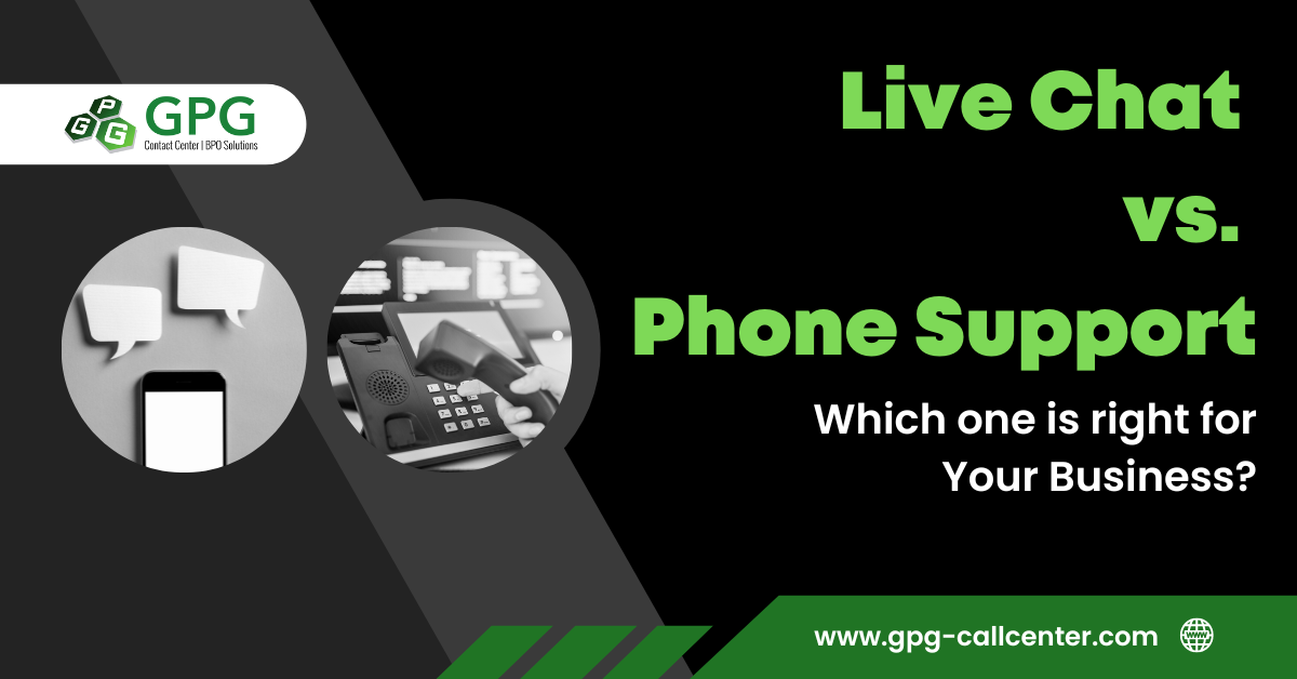When customers are shopping for products and services, they want the ask questions and have those answered in a timely manner and with the information they need.
The same applies when it comes to customer service.
When customers need help with shipping issues, product warranties, and help scheduling an appointment for service, they expect businesses to provide them with rapid responses and with the assistance they need.
Phone vs. Live Web Chat Support: Pros and Cons
There are a lot of different engagement options available for businesses.
Phone support goes back decades and remains a preference for certain customers and for specific types of issues.
There are a lot of arguments for and against each. Email arose as an option with the rise of the digital age. Nearly every company with a website added email as a contact option.
But with many customers needing and expecting a response in a couple hours, if not sooner, email isn’t a good option for the majority of customer sales and support questions (with most companies responding in 12 hours).
Live chat is an option that businesses can offer customers on their website or mobile app.
While some live chat solutions are static, available for customers to find and use, others are more proactive; live chat appears on specific pages based on the behavior of the website visitor. In these instances, live chat can be used to prevent shopping cart abandonment, retarget return visitors with offers, and upsell and cross-sell customers.
According to Gartner, receiving proactive support leads to a 9% increase in a customer’s value enhancement score.
Determining if Phone, Live Web Chat, or Both Fit Your Business
Businesses must decide if phone or live chat are the best options for sales and customer support engagement.
Often, it is not a matter of either/or but both. Following is an assessment of the pros and cons.
Making Engagement and Support Proactive
Today, nearly all phone support is reactive.
A phone number is posted on a website, and a customer must elect to pick up their phone and call a business.
But two-thirds of customers indicate they want proactive outreach from brands for customer support issues.
There are ways for businesses now to promote their phone numbers to website visitors in a more proactive manner using click to call.
Phone chat that enables customers to click on a pop out or button—which are proactively offered based on visitor behavior—can immediately prompt a phone call from the customer’s mobile device or even web browser.
These can be directed to a specific member of your support or sales teams.
But unlike most phone support, live web chat is more proactive.
Proactive live web chat can appear the moment a visitor lands on your site, or it can be customized to engage with website visitors based on their behavior—down to the level of individual pages.
Behaviors include how long a user is on a page, what page they’re on, how many pages they’ve viewed, and how many times they’ve visited your site.
Outcomes of proactive live web chat equates to higher conversion rates, better understanding of customers, reduction in shopping cart abandonment, and better targeting of customers based on their needs.
Live web chat as a percentage of support tickets surged almost 50% during the pandemic.
Providing Customers With the Engagement Method They Want - Omnichannel
Most customers want multiple engagement options from their businesses.
The type of engagement channel used by live web chat depends on the nature of their question or problem and demographic of the customer.
75% of people prefer live web chat over any other digital channel.
Yet, at the same time, they also want an omnichannel engagement model where they can use phone when they want, live web chat in other instances, and social for others, among others.
The more digital real estate a business can cover, the more successful they can be.
Live web chat is a critical requirement here.
Businesses with a clearly defined omnichannel customer engagement platform have a 91% retention rate, compared to a 33% retention rate for those with a weaker omnichannel engagement model.
Responding in Real Time
In Blink: The Power of Thinking Without Thinking, Malcolm Gladwell argued that first impressions are made in a matter of a few seconds and that those first impressions are difficult to change once they have been made.
For example, a study by HubSpot found that 82% of customers look for an “immediate response” from businesses on marketing and sales questions.
An immediate response is defined in terms of a response in 10 minutes or less. But phone support often involves lengthy waits until a support specialist is available.
As the minutes tick past, customers become more and more frustrated and their brand impression and loyalty of the business dissipates quickly.
Live web chat provides organizations with greater scalability and a channel through which businesses can response to customer questions or problems much faster than through phone support.
Live web chat agents can speak concurrently with three to five customers at one time. With phone support, agents can speak with one customer at a time.
Mining and Analyzing Your Sales and Support Engagement Data
In the past, it is easier to mine live web chat data versus phone support engagement.
Use of natural language processing (NLP) capabilities make it easier to create text-based documents of phone support that can be mined and analyzed like live web chat.
This enables organizations to analyze sales and support engagement via both phone and live web chat in terms of trending topics, sentiment, values, and other data-analytical areas.
Yet, most phone support solutions do not have NLP built into their offerings, and businesses should vet phone support options when considering them.
For small businesses, it is important that the NLP and analytical capabilities are built into the solutions they use. They simply don’t have sufficient resources to create and staff separate organizational functions to do so.
NLP-driven data analysis yields insights businesses can tap to assess customer loyalty, pinpoint new marketing opportunities, and proactively identify problems.
Achieving Omnichannel Sales and Customer Engagement
Staffing and managing just one customer engagement channel is often difficult, if not impossible, for small businesses.
Phone and live web chat staff take time to recruit and train. Moreover, many small businesses cannot afford to hire the staff.
This is where on-demand, pay-as-you-go services like GPG Virtual Receptionists and Live Web Chat Services offer a flexible, affordable option.
Teams of professionals at GPG serve multiple clients—both sales and service—over phone and live web chat channels.
They become experts in the clients’ businesses they support and serve as a virtual extension.
GPG engagement professionals also offer small businesses the ability to embrace omnichannel engagement models.
Source: Live Chat vs. Phone Support: Which Is Right for Your Business? (davincivirtual.com)


